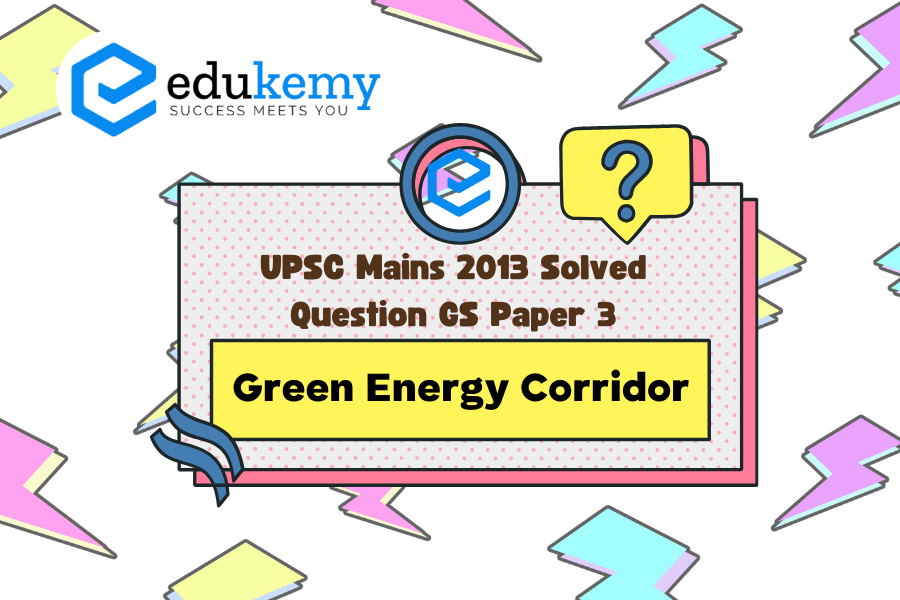India’s Green Energy Corridor represents a pivotal step towards a sustainable and resilient energy future for the nation. In recent years, India has faced significant challenges stemming from its reliance on conventional energy sources, including issues such as air pollution, resource depletion, and climate change. To address these pressing concerns, the Indian government has embarked on a transformative journey towards integrating renewable energy into its power grid through the development of the Green Energy Corridor. This ambitious initiative aims to alleviate the problems associated with conventional energy by facilitating the seamless transmission of clean energy generated from renewable sources such as solar, wind, and hydroelectric power plants. By establishing an interconnected network of transmission lines, substations, and infrastructure specifically designed to accommodate renewable energy, the Green Energy Corridor aims to overcome the existing constraints that hinder the efficient integration of renewable energy into the national grid. Furthermore, this initiative holds the promise of enhancing energy security, reducing greenhouse gas emissions, and fostering economic development by promoting investment in renewable energy projects across the country. Through strategic planning, technological innovation, and collaborative partnerships, India’s Green Energy Corridor endeavors to usher in a new era of sustainable energy production and consumption, setting a precedent for other nations to follow in the global transition towards a greener and more sustainable future.
Tag: Infrastructure: energy, ports, roads, airports, railways, etc. Conservation, environmental pollution, and degradation, environmental impact assessment.
Contents
Decoding the Question:
- In Introduction try to write about the Green Energy Corridor.
- In Body,
- Discuss problems in India’s conventional energy.
- Discuss how green energy corridors alleviate problems of conventional energy.
- Try to conclude by writing about Indian renewable energy targets.
Answer:
The Green Energy Corridor Project aims at synchronizing electricity produced from renewable sources, such as solar and wind, with conventional power stations in the grid.Green Energy Corridor is an intra-/ inter-state transmission system which is being implemented by eight renewable rich states in India – Tamil Nadu, Rajasthan, Karnataka, Andhra Pradesh, Maharashtra, Gujarat, Himachal Pradesh and Madhya Pradesh. The scheme will facilitate grid integration and power evacuation of about 20 GW of renewable energy (RE) projects in seven states.
Need for a Green Energy Corridor in India:
- The project aims at integrating large-scale renewable generation capacity addition with the main grid.
- Last year the Prime Minister pledged to increase the country’s non-fossil fuel power generation capacity to 500GW and meet 50% of its energy requirements from renewable sources by the end of this decade. So there is a need to integrate these energies.
- The country needs to prepare itself for greater penetration of renewable energy.
- Grid stability and security are the main concerns for India presently.
- The Ministry of Power has proposed to set up Renewable Energy Management Centres (REMCs) to help integrate renewables into the grid.
- These centers will be responsible for forecasting and scheduling renewable energy generation at state and regional levels, and coordinating with state load dispatch centers (SLDCs).
Green Corridor Resolves Conventional Energy Problems:
- Different Voltage: At present, the National Grid confronts trouble in engrossing sustainable power sources because of differing voltage and supply. The aim is to make the transmission framework dynamic to deal with the variations in voltage. Germany’s technological help would be pivotal in this project since it has keen networks which can incorporate sustainable power sources into its national matrix.
- Future Proof: India has an expected 28000 MW of Installed sustainable power source capacity. Bringing this into the national grid needs overhauling of the overall national grid. The National Green corridor will help in the smooth transfer of power in this grid system.
- Connecting Roof-Top: Rooftop solar energy production has been given a boost by government policies. This increasing rooftop solar power production needs to be connected to the state or national grid, and the green energy corridor will help to reduce this issue.
- Help to Achieve Targets: As the government has set targets of 175 GW renewable energy in which solar and wind have a significant chunk. To connect them to the national grid is essential and this NGC will help in fastening targets achievements.
- Reserving Coal Deposits: NGC will contribute to reducing dependence on coal for thermal energy generation hence, India may potentially keep reserves of coal for future generations.
Way forward:
- The project is important for strengthening and creating a reliable transmission infrastructure, evacuation of power from renewable energy projects and renewable rich states, and increasing the share of renewable energy generation.
- The renewable energy generation is increasing at a fast pace in India. The country’s cumulative installed capacity reached 20 GW for solar and 32.75 GW for wind.
- The country ranks fourth globally, in terms of wind power installed capacity, after China, USA and Germany.
- The pace should continue improving in the future. It is, therefore, high-time that the country prepares itself to absorb and transmit these huge renewable energy capacities.
Thus, it is said that India’s green energy corridor will not only help in connecting green energy from different parts of the country but also, it will have multiple impacts on India’s green energy generation and distribution in different parts of the country.
In case you still have your doubts, contact us on 9811333901.
For UPSC Prelims Resources, Click here
For Daily Updates and Study Material:
Join our Telegram Channel – Edukemy for IAS
- 1. Learn through Videos – here
- 2. Be Exam Ready by Practicing Daily MCQs – here
- 3. Daily Newsletter – Get all your Current Affairs Covered – here
- 4. Mains Answer Writing Practice – here


